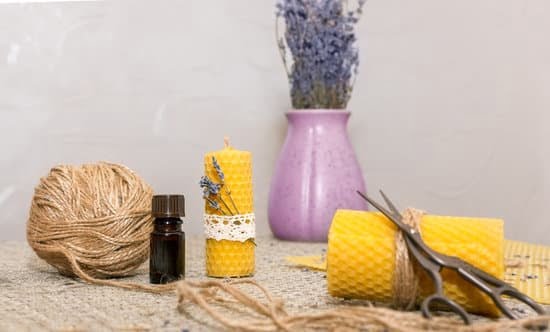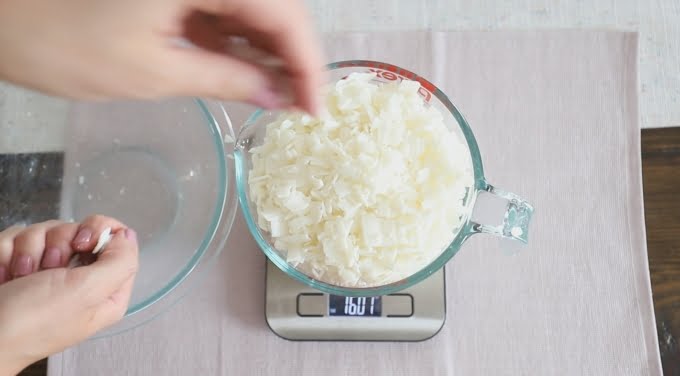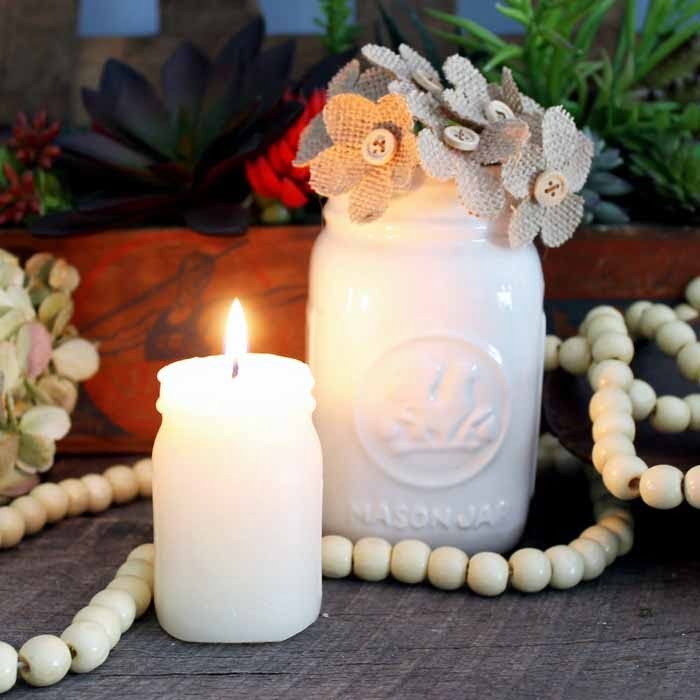Are you looking for a unique and creative way to make candles at home? If so, you might be wondering if soap can be used as a viable option for candle-making. In this article, we will explore the idea of using soap to make candles and delve into the properties of soap that make it a potential candidate for this craft.
The use of soap as a material for making candles is an intriguing concept that has gained attention in the crafting community. While most people associate soap with its cleansing properties, it also possesses attributes that can make it suitable for candle-making. Understanding these properties and how they can be harnessed for creating candles will be the focus of this exploration.
Throughout this article, we will discuss the pros and cons of using soap for candle-making, provide practical step-by-step guides, share tips and tricks for successful soap-based candle-making, suggest different types of soaps that work best for this purpose, explore ways to customize and enhance soap-based candles creatively, and address potential safety concerns and precautions. By the end, we hope to answer the question: Is soap a viable option for making candles?
Join us as we delve into the possibilities and limitations of using soap to create beautiful homemade candles.
Understanding the Properties of Soap and Its Potential for Candle-Making
Soap is a versatile and widely-used household product that has many properties that make it suitable for candle-making. Understanding the chemical makeup of soap and how it behaves when used for making candles is essential for anyone interested in exploring this unique crafting venture.
Chemical Properties of Soap
One of the key properties of soap that makes it suitable for candle-making is its ability to melt at relatively low temperatures. This means that soap can be easily melted down and molded into different shapes, making it an ideal base for creating candles. Additionally, the natural oils and fats used in soap production can contribute to the overall quality and burn time of the candles.
Potential for Candle-Making
When considering the potential of using soap for making candles, it’s important to recognize that there are different types of soap with varying ingredients and properties. For example, glycerin-based soaps are known for their clarity and ability to hold fragrance well, making them a popular choice for candle-making. Additionally, some soaps contain additives such as shea butter or coconut oil, which can add unique qualities to the resulting candles.
The Role of Saponification
Another factor to consider when using soap for candle-making is the process of saponification-the chemical reaction that occurs when oils or fats are combined with an alkali (such as lye) to create soap. This process transforms the ingredients into a substance with specific properties that can affect its performance as a candle wax.
Overall, understanding the properties of soap and its potential for candle-making is crucial in determining whether it is a viable option for crafting homemade candles. By delving into the chemical makeup of soap, its potential for various candle-making processes can be fully realized.
Pros and Cons of Using Soap for Candle-Making
Using soap for candle-making can be an interesting and creative alternative to traditional candle materials. Soap contains a variety of properties that make it suitable for creating candles, such as its ability to melt easily and hold fragrance. However, there are both pros and cons to consider when using soap for candle-making.
One of the main advantages of using soap for making candles is its accessibility. Soap is widely available in various forms, colors, and scents, providing a wide range of options for creating unique and personalized candles. Additionally, soap has a lower melting point than traditional candle wax, which makes it easier to work with and allows for faster production of candles.
On the other hand, there are some drawbacks to using soap for making candles. One potential concern is the flammability of certain types of soap, which could affect the safety and burn quality of the candle. Another consideration is the potential for discoloration or changes in scent when the soap is burned as a candle.
| Pros | Cons |
|---|---|
| Accessibility | Flammability |
| Lower melting point | Discoloration and scent changes |
Despite these potential drawbacks, with careful consideration and experimentation with different types of soaps, it is possible to create beautiful and fragrant candles using this unconventional material. Understanding the pros and cons discussed above will help individuals decide whether using soap for candle-making is the right choice for their crafting needs.
Step-by-Step Guide to Making Candles Using Soap
When it comes to making candles, soap can indeed be used as a primary ingredient. In fact, using soap to create candles can be an enjoyable and fulfilling DIY project. Here’s a step-by-step guide on how to make your own soap-based candles.
First, gather all the necessary materials, including soap base, a double boiler or microwave-safe bowl, a thermometer, candle dye (if desired), fragrance oil or essential oil, candle wicks, and candle molds. Make sure to work in a well-ventilated area and protect your workspace with newspaper or wax paper.
Next, cut the soap base into small cubes for easier melting. Place the cubes in the double boiler or microwave-safe bowl and melt them down according to package instructions. You’ll want to heat the soap base to around 160-170°F while constantly stirring to prevent scorching.
Once the soap is fully melted, add in your desired amount of candle dye and fragrance oil or essential oil. Stir the mixture thoroughly to ensure even distribution of color and scent. Then, carefully pour the melted soap into the candle molds, making sure to leave enough space at the top for the wick.
After pouring the melted soap into the molds, insert the pre-tabbed wick into each mold’s center, ensuring that it remains upright as the candle cools and solidifies. Allow plenty of time for the candles to harden before removing them from their molds – typically several hours or overnight.
By following these simple steps, you can create beautiful and unique candles using soap as your main ingredient. Make sure to experiment with different colors, scents, and mold shapes to customize your homemade candles exactly how you like them.
Tips and Tricks for Successful Soap-Based Candle-Making
When it comes to making candles using soap, there are a few tips and tricks that can help ensure successful results. One important tip is to choose the right type of soap for your candle-making project.
Not all soaps are created equal, and some may work better than others when it comes to creating candles. It’s important to look for soaps that have a high melting point and a solid texture, as these properties will make the soap more suitable for use in candle-making.
Another important tip for successful soap-based candle-making is to pay attention to the fragrance and color of the soap. Many soaps come in a variety of scents and colors, which can add an extra layer of customization to your candles. However, it’s important to note that not all fragrances or colors may be suitable for candle-making.
Some fragrances may not hold up well when exposed to heat, while certain colors may affect the appearance of the melted wax. It’s important to test different soap varieties before committing to a large batch of candles.
In addition, it’s essential to consider the wick you will use when making candles with soap. A properly sized wick is crucial for ensuring that the candle burns evenly and cleanly. In some cases, you may need to experiment with different wick sizes to find the best option for your soap-based candles. Finding the right wick can make a significant difference in the overall quality of your finished product.
Overall, paying attention to the type of soap used, considering fragrance and color options, and choosing the right wick are all essential tips for successful soap-based candle-making. By following these guidelines, crafters can create beautiful and unique candles using soap as their primary ingredient.
Different Types of Soaps That Work Best for Candle-Making
When it comes to making candles using soap, it is important to consider the type of soap that will work best for this specific purpose. Not all soaps are created equal, and certain types have properties that make them more suitable for candle-making. Let’s explore some of the different types of soaps that can be used to create unique and beautiful candles.
Glycerin Soap
Glycerin soap is a popular choice for making candles due to its clear appearance and ability to hold color well. This type of soap is known for its moisturizing properties and can produce beautifully translucent and colorful candles.
Beeswax Soap
Beeswax soap is another great option for candle-making. It has a natural honey scent, which adds a lovely fragrance to the candles. Beeswax also has a high melting point, which makes it ideal for creating long-lasting candles.
Coconut Oil Soap
Coconut oil soap is known for its creamy lather and moisturizing effects on the skin. When used in candle-making, it can create smooth and luxurious candles with a tropical scent.
Each type of soap offers unique characteristics that can enhance the final product when used in candle-making. Whether you’re looking for a specific color, fragrance, or texture, choosing the right type of soap can help you achieve the desired results when making your own candles.
Creative Ways to Customize and Enhance Soap-Based Candles
When it comes to making candles using soap, there are various creative ways to customize and enhance the final product. Whether you’re looking to add a personal touch or elevate the aesthetic appeal of your candles, there are several techniques and ingredients that can help you achieve the desired result. Here are some ideas for customizing and enhancing soap-based candles:
- Embedding objects: One way to make your soap-based candles stand out is by embedding objects within the candle itself. This could be anything from dried flowers and herbs to small decorative items. As the candle burns, these embedded objects will become visible, adding visual interest and uniqueness to the candle.
- Layering colors and scents: Another way to customize soap-based candles is by creating layers of different colored and scented wax. This can be achieved by pouring one layer of melted, colored wax into the container, allowing it to harden, and then pouring another layer on top. This creates a visually appealing effect when the candle is lit and also allows for the combination of different scents.
- Adding texture: To enhance the visual and tactile appeal of soap-based candles, consider adding texture to the surface of the candle. This can be achieved by sprinkling dried herbs or spices onto the hot wax before it hardens, or by using a textured mold to create interesting patterns on the surface of the candle.
These creative customization ideas can help elevate your soap-based candles from simple household items to unique works of art. Experiment with different techniques and materials to find what works best for you and have fun with the process.
Exploring the Potential Safety Concerns and Precautions for Using Soap in Candle-Making
Using soap for making candles can be a fun and creative process, but it is important to consider the potential safety concerns and take necessary precautions. Here are some safety tips and guidelines to keep in mind when using soap to make candles:
- Ventilation: When melting soap to use for candle-making, it is important to ensure that the area is well-ventilated. This will help to prevent inhaling any fumes that may be produced during the melting process.
- Handling Hot Wax: Just like with traditional candle-making, working with hot melted soap requires caution. Always use protective gloves and handle the hot wax carefully to avoid burns or injuries.
- Use of Fragrances: If you choose to add fragrances or essential oils to your soap-based candles, make sure to use ones that are specifically designed for candle-making. Some scents may not react well with the properties of soap and could potentially cause irritation or other issues when burned.
In addition to safety concerns, there are also certain precautions that should be taken into consideration when using soap for making candles:
- Testing: Before mass-producing soap-based candles, it is important to test out your recipe on a small scale. This will help identify any potential issues or safety concerns before creating a larger batch of candles.
- Storage: Once the soap-based candles are made, they should be stored in a cool, dry place away from direct sunlight and heat sources. This will help maintain their quality and reduce the risk of any safety hazards associated with improper storage.
- Candle Safety: As with all candles, whether made from traditional wax or soap, it is important to follow basic candle safety guidelines such as never leaving a burning candle unattended and keeping them away from flammable materials.
By being mindful of these safety concerns and taking necessary precautions, you can enjoy the process of making unique and beautiful candles using soap while minimizing any potential risks involved in this creative endeavor.
Conclusion
In conclusion, the idea of using soap for making candles is indeed a viable option with its own set of possibilities and limitations. While traditional candle-making involves wax, experimenting with soap can offer a unique and creative twist to the process. Understanding the properties of soap, such as its ability to hold fragrance and color, opens up a new avenue for candle-making enthusiasts to explore.
The pros of using soap for candle-making include its versatility in terms of customization, as well as the potential for creating beautifully scented and colored candles. Additionally, using soap can be a cost-effective alternative for those who may not have access to specialized candle-making materials. However, it’s important to consider the cons as well – such as the potential for uneven burning and a softer finished product that may require additional care when handling.
For those interested in trying their hand at making candles using soap, there are several types of soaps that work best for this purpose. From glycerin-based soaps to natural and organic options, each type offers its own unique qualities that can enhance the final product. It’s essential to carefully follow a step-by-step guide and take note of tips and tricks to ensure successful results when making candles with soap.
And while exploring the creative ways to customize and enhance soap-based candles is exciting, it’s equally crucial to be mindful of safety concerns and precautions when working with soap in candle-making endeavors. Overall, while there are possibilities and limitations when using soap for making candles, it remains a fascinating option worth considering for those looking to expand their crafting horizons.
Frequently Asked Questions
Can You Use Soap to Make a Candle?
No, you cannot use soap to make a candle. Soap and candle making are two different processes that require specific ingredients and techniques. While both involve melting and pouring, the components used in each are not interchangeable.
Can You Use Soap Making Fragrance in Candles?
Yes, you can use soap making fragrance in candles. Many fragrances used in soap making are also suitable for candles. However, it’s important to ensure that the fragrance oil is specifically formulated for candle making, as some may not perform well or could be unsafe when used in candles.
Can You Use Soap as a Wax Melt?
Yes, you can use soap as a wax melt. In fact, some people repurpose leftover pieces of scented soap by using them as wax melts.
When heated, the soap releases its scent just like a regular wax melt would. However, it’s worth noting that this may not produce the same results as using a traditional wax melt, so it’s best to experiment with small amounts first.

Welcome to my candle making blog! In this blog, I will be sharing my tips and tricks for making candles. I will also be sharing some of my favorite recipes.





